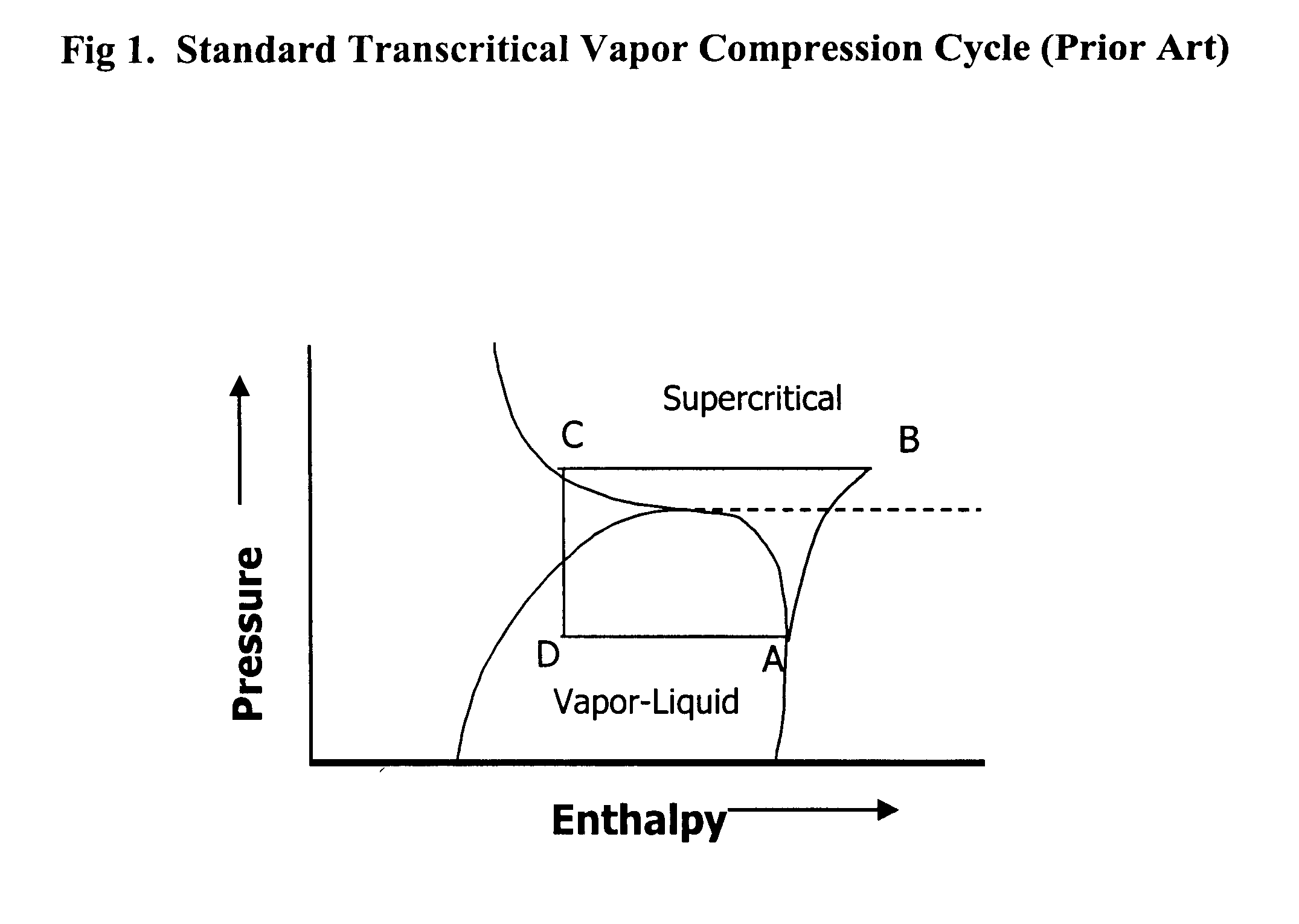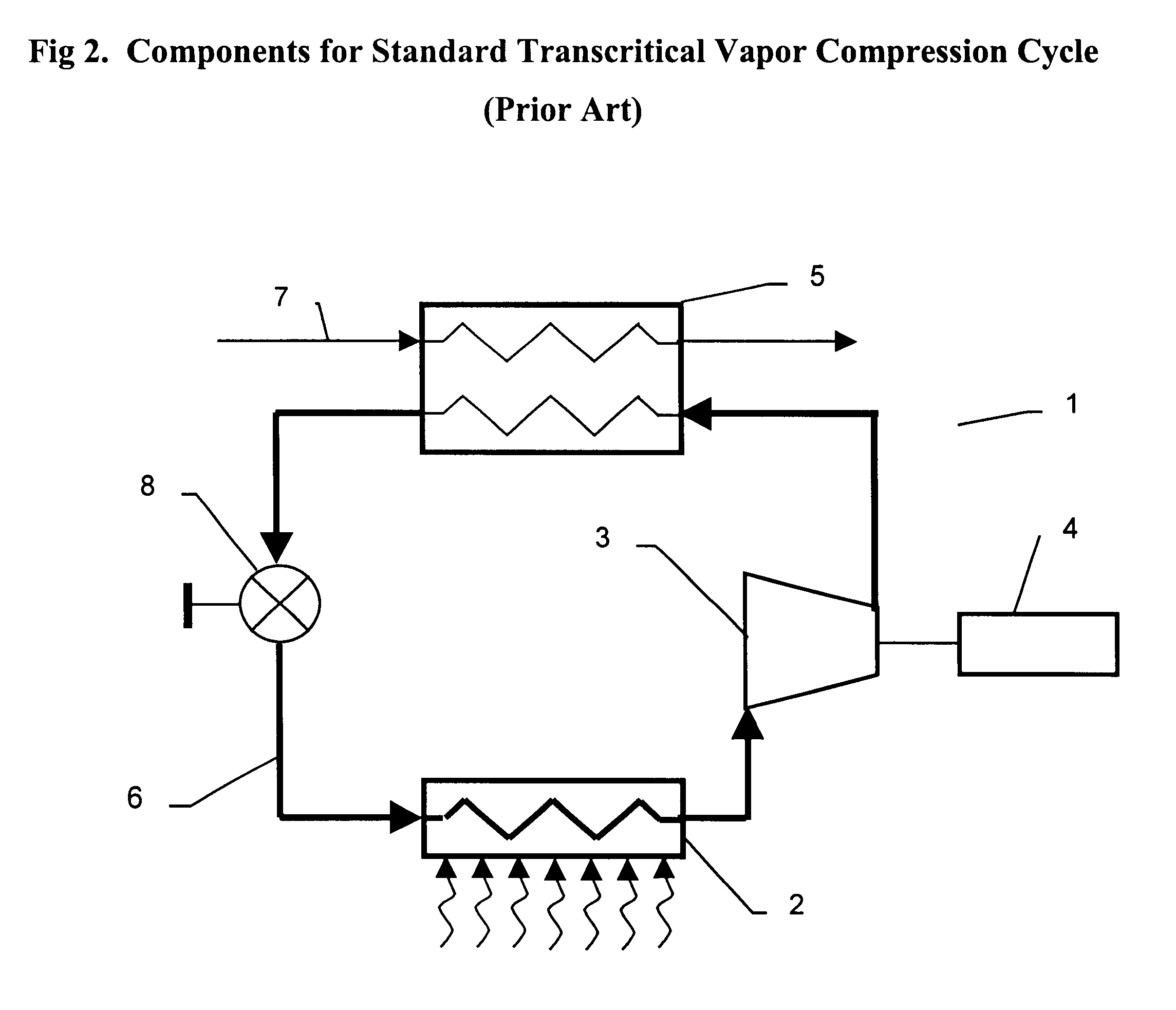Method of refrigeration with enhanced cooling capacity and efficiency
a technology of refrigeration and efficiency, applied in the field of refrigeration methods, can solve the problems of cfcs environmental risks, best substitutes present long-term risks, and offer a control method, so as to improve the efficiency of transcritical vapor compression refrigeration cycles and increase their capacity
- Summary
- Abstract
- Description
- Claims
- Application Information
AI Technical Summary
Benefits of technology
Problems solved by technology
Method used
Image
Examples
example 2
The COP of a cycle operating with a turbine and no intercooler can be improved more than two times, from 2.93 to 6.15, by allowing the temperature at the evaporator inlet (or turbine outlet) to rise from 5.degree. C. to 25.degree. C.
Under practical circumstances, however, the turbine is not expected to operate at 100% isentropic efficiency. Efficiency is in a range of 60% to 85% for impulse turbines, and 60% to 90% for reaction turbines. COP for a cycle operating with an impulse turbine at 85% efficiency is approximately 30-40% higher than the standard cycle and 1-2% more for a reaction turbine.
FIG. 4 depicts the components of a system (9) operating according to the cycle shown in FIG. 3. Working fluid (6) exits the heat absorber and enters the suction of the compressor (3) which is driven by motor (4) and which can receive supplementary power by coupling (11), although the use of said coupling is not a requirement of the invention. The fluid then moves in similar manner as in the s...
PUM
 Login to View More
Login to View More Abstract
Description
Claims
Application Information
 Login to View More
Login to View More - R&D
- Intellectual Property
- Life Sciences
- Materials
- Tech Scout
- Unparalleled Data Quality
- Higher Quality Content
- 60% Fewer Hallucinations
Browse by: Latest US Patents, China's latest patents, Technical Efficacy Thesaurus, Application Domain, Technology Topic, Popular Technical Reports.
© 2025 PatSnap. All rights reserved.Legal|Privacy policy|Modern Slavery Act Transparency Statement|Sitemap|About US| Contact US: help@patsnap.com



